Do you have a question about the Lincoln 1996 Continental and is the answer not in the manual?
Explains Ford's dedication to excellence in vehicles and services, driven by customer satisfaction.
Outlines core principles like quality, customer focus, continuous improvement, employee involvement, partnerships, and integrity.
Describes provision of a loaner car or rental allowance for overnight warranty service.
Provides custom-computerized travel information, including maps and routes.
Grants complimentary membership for travel-related discounts at hotels.
Refers to the Warranty Information Booklet for details on coverage and basic rights.
Personalizes the owner's name and vehicle identification for customer service.
Lists important services for vehicle maintenance and provides a log for tracking performed services.
Explains vehicle warranty coverage, including basic, extended, and emissions warranties.
Describes an optional service protection contract for extended coverage beyond the basic warranty.
Details the benefits of safety belts and conditions for optimal restraint in a collision.
Explains how the belts adjust and lock during movement or impact to reduce forward movement.
Details how to adjust shoulder belt height for driver and front passenger for optimal fit.
Explains the availability of safety belt extensions to increase belt length.
Advises on periodic checks and inspection of safety belt systems after any collision.
Recommends using mild soap solutions for cleaning safety belts and avoiding bleach or dye.
Instructs on proper disposal procedures for air bags and equipped vehicles.
Guides on selecting, installing, and using safety seats for children.
Instructs on adjusting the lap belt for a snug fit around the hips.
Describes the different ignition key positions and their functions.
Illustrates and explains the functions of the ignition key positions (LOCK, ACC, ON, START).
Details the procedure for safely removing the ignition key from the vehicle.
Lists essential steps before starting the vehicle, like safety belt use and accessory checks.
Provides step-by-step instructions for starting the vehicle's engine.
Shows a diagram of the instrument cluster, labeling key gauges and indicators.
Details various indicator lights and chimes that alert the driver to vehicle conditions.
Explains the function of the ABS warning light and when to seek service.
Explains when the Traction Control active light illuminates and its duration.
Explains the function of turn signal indicators and how they operate.
Explains the flashing and steady states of the anti-theft alarm light.
Explains the function and operation of the electronic message center for vehicle status.
Details features controllable via message center buttons for personalization.
Explains how to perform a system check using the message center and its sequence.
Explains how to display Distance To Empty and Average Fuel Economy.
Describes the feature to change units between English and Metric.
Explains how to display and reset trip odometers.
Describes how to turn the message center display on and off.
Explains how to change various convenience settings throughout the vehicle.
Describes the tachometer and the importance of avoiding the red zone.
Explains how to read the engine coolant temperature gauge and what to do if overheating occurs.
Describes warnings that appear in the overhead console, like Low Tire Pressure.
Provides a labeled diagram of the instrument panel and its controls.
Details the EATC system's location, operation, and automatic temperature control features.
Explains how to display and cancel the outside temperature reading.
Advises to take the EATC to a dealer if it is not operating correctly.
Explains the operation of the Daytime Running Light system for Canadian vehicles.
Provides instructions on cleaning exterior lamps without causing damage.
Explains how to set the autolamp system for automatic headlamp operation.
Details how to adjust interior lighting and instrument panel brightness.
Provides instructions for cleaning interior dome and map lamps.
Explains the functions of the turn signal lever for lights and wipers.
Details how to turn on and off the high beams using the turn signal lever.
Explains how to flash the headlamps using the turn signal lever.
Guides on operating the windshield wipers and washer system.
Provides instructions for cleaning the windshield and troubleshooting the washer system.
Details the location and function of speed control switches on the steering wheel.
Explains how to momentarily accelerate while using speed control.
Provides methods for resetting or lowering the set speed for the speed control system.
Explains how to turn off the speed control system.
Covers door-related features, including childproof locks and power locks.
Explains the operation of power door locks and their controls.
Describes the feature that prevents locking keys inside the vehicle.
Guides on locking/unlocking doors and opening the trunk using the keyless entry system.
Provides step-by-step instructions for unlocking doors and trunk using the keyless entry system.
Explains how to lock doors using the keyless entry system.
Guides on programming personal entry codes for the keyless entry system.
Explains how to unlock doors and open the trunk using the remote entry transmitter.
Describes how to lock all doors using the remote entry LOCK button.
Explains how to activate the remote personal alarm feature.
Details methods for disarming a triggered anti-theft alarm.
Explains how to operate power windows using door controls and the master panel.
Explains the proper use and adjustment of head restraints for safety.
Provides instructions on adjusting vehicle seats for comfort and safety.
Explains how to adjust power seats in multiple directions for comfort.
Details the heated seat controls for selecting mode and heat level.
Explains how vehicle settings are automatically recalled using various entry methods.
Details how the remote entry transmitter interacts with personality memory settings.
Explains how keyless entry codes can be programmed and used for unlocking.
Describes how memory switches recall personality settings.
Explains the auto-dimming feature of interior and exterior mirrors to reduce glare.
Details the operation of electric side mirrors, including convex right mirror and reverse tilt.
Shows the controls for adjusting side mirrors using the electric remote control.
Explains that mirrors are heated when the rear window defroster is on.
Guides on using the regular and second visor for comprehensive sun protection.
Details how to light and adjust the illuminated visor mirror.
Describes the compartment in the overhead console for housing the garage door transmitter.
Provides step-by-step instructions for programming the universal transmitter.
Guides on operating the universal transmitter by pressing the appropriate button.
Describes the features available with a full console.
Details the mini console cupholders found in six-passenger vehicles.
Describes the locations of storage compartments like map pockets.
Instructs on manually opening the trunk using the lock cylinder.
Explains the three ways to use the power trunk release feature.
Describes the cargo storage system designed for trunk space optimization.
Guides on positioning the floor mat for proper pedal operation.
Details the manual override procedure for opening the fuel filler door.
Describes the location and display of the electronic compass.
Lists external factors that can influence compass accuracy.
Provides steps for calibrating the electronic compass for accurate readings.
Guides on adjusting the compass zone setting based on geographical location.
Explains the low tire pressure warning system and its overhead console alerts.
Describes the flashing warning for imminent flat tires and the need for Securitire service.
Introduces the Lincoln RESCU system for roadside and emergency assistance.
Identifies the location of the RESCU activation buttons in the overhead console.
Describes how the message center displays status messages during a RESCU activation.
Explains the GPS technology used for vehicle location tracking.
States that RESCU service is limited to the 48 contiguous U.S. states.
Explains that the system requires an active and functional cellular phone.
States that the system requires a connected and charged vehicle battery.
Explains how signal obstructions can degrade or lose positioning capability.
Explains system limitations in areas with poor or no cellular coverage.
Notes incompatibility with cellular phones using a PIN feature.
Warns about potential performance issues with certain cellular features.
Explains the mandatory registration process with the Lincoln Security Response Center.
Requires users to initiate an acquaintance activation after receiving the vehicle.
Advises contacting the response center to cancel service when relinquishing the vehicle.
Describes the digital luxury audio system with its various controls.
Details the analog luxury audio system and its operational controls.
Covers basic radio operations like turning on/off and adjusting volume.
Guides on selecting AM and FM frequency bands for radio tuning.
Explains multiple methods for tuning radio stations, including TUNE, SEEK, SCAN, and memory buttons.
Guides on adjusting bass, treble, and balance/fader controls for audio output.
Explains how to use the SCAN function to sample tracks on a CD or tape.
Details how to use both shuffle and scan features concurrently.
Explains how to stop CD playback and resume radio or cassette play.
Provides instructions for stopping tape playback and ejecting the cassette.
Explains how to stop the tape player and resume radio play.
Describes how to activate the Dolby B noise reduction feature for improved audio quality.
Lists common error codes for the cassette tape player.
Discusses how signal strength and distance affect FM radio reception quality.
Explains how terrain features like buildings and hills can affect FM signal reception.
Details the AM and FM frequency bands used by radio stations and FCC/CRTC regulations.
States the warranty period for the sound system and refers to the vehicle warranty booklet.
Explains Ford's service program and recommends dealer service for audio system issues.
Explains the operation of the automatic overdrive transaxle for fuel economy and performance.
Guides on selecting gears and operating the shift lever, with safety precautions.
Details gear selection for Reverse (R) and Neutral (N) positions.
Explains when to use the Overdrive gear for optimal fuel economy and performance.
Details when to use Drive for improved engine braking on downgrades.
Guides on using First gear for added engine braking when descending steep hills.
Instructs on properly engaging Park to secure the vehicle and prevent wheel rotation.
Explains power steering operation, effort adjustments, and manual steering.
Explains how to apply the brakes, including ABS operation and pedal pulsation.
Instructs on when and how to use the parking brake.
Offers general tips for safe driving, including getting accustomed to the vehicle.
Offers precautions for driving on slippery road surfaces.
Advises not to exceed maximum load stated on the Safety Compliance Certification Decal.
Provides guidance on selecting the right equipment and preparing the vehicle for towing.
Instructs on properly attaching trailer safety chains for secure towing.
Guides on connecting trailer lighting systems correctly to avoid vehicle damage.
Advises on the increased service frequency required for vehicles that tow trailers.
Explains how to jump-start a vehicle with a dead battery using a booster battery.
Details the steps to prepare the vehicle and booster vehicle for safe jump-starting.
Provides a step-by-step guide for correctly connecting jumper cables.
Outlines the procedure for jump-starting a vehicle after connecting cables.
Explains the characteristics and limitations of the temporary spare tire.
Indicates where the spare tire and jack kit are stored in the vehicle.
Details preparation steps before changing a tire, including securing the vehicle.
Provides step-by-step instructions for removing the flat tire and installing the spare.
Guides on how to remove the anti-theft lug nut using the provided key.
Details how to install the anti-theft lug nut using the special key.
Explains the function of the fuel pump shut-off switch and how to reset it.
Describes front towing methods using a wheel lift.
Describes rear towing methods using a wheel lift or flatbed.
Provides guidance on selecting the right equipment and preparing the vehicle for towing.
Instructs on properly attaching trailer safety chains for secure towing.
Advises on the increased service frequency required for vehicles that tow trailers.
Explains how to get service and address concerns at dealerships and through customer assistance.
Outlines the process for resolving service and maintenance concerns in the U.S. and Canada.
Provides contact information for requesting application materials from the Board.
Outlines the steps involved in reviewing a case and the information required.
Lists travel-related accessories like heavy-duty battery and engine block heater.
Lists accessories for comfort and convenience, such as cargo nets.
Lists accessories for vehicle protection and appearance enhancement.
Provides order details for U.S. residents, including payee and mailing address.
Provides order details for Canadian residents, including payee and mailing address.
Highlights Ford's design philosophy for easy servicing and maintenance.
Advises using genuine Ford replacement parts for accident repairs.
Offers advice on protecting oneself during vehicle repair processes.
Warns against working on a hot engine due to potential fan activation and heat.
Advises precautions when working with the engine running, especially regarding loose clothing.
Outlines steps for safe work when the engine is turned off.
Details the procedure for opening the vehicle's hood from inside the cabin.
Provides a labeled diagram of the engine compartment showing service points.
Explains how to open the fuel filler door using the interior button or manual override.
Details the manual override procedure for opening the fuel filler door.
Recommends premium fuel with a 91 octane rating for optimal engine performance.
Discusses oxygenated fuels and their use to improve air quality.
Provides a step-by-step guide for calculating fuel economy.
Compares EPA estimates with actual driving conditions and lists factors decreasing fuel economy.
Offers simple maintenance routines for owners who perform their own fueling.
Explains the API Certification Mark for engine oils.
Explains how to check the engine coolant level in the reservoir.
Provides instructions for adding engine coolant, including safety warnings.
Provides a detailed procedure for refilling the engine coolant system to ensure a complete fill.
Recommends returning used lead-acid batteries to authorized recycling facilities.
Guides on checking washer fluid levels and using appropriate fluid.
Advises on checking, cleaning, and replacing windshield wiper blades.
Explains when and how to replace tires based on wear bands.
Provides the exact wording from the DOT regarding tire quality grades.
Explains the treadwear grade as a comparative rating of tire wear.
Describes traction grades representing the tire's ability to stop on wet pavement.
Explains temperature grades representing tire heat resistance and dissipation capability.
Provides instructions for washing vehicle wheels and using appropriate cleaners.
Explains the Securitires system for limited driving with low tire pressure.
Guides on checking the automatic transaxle fluid level under various conditions.
Guides on adding automatic transaxle fluid, ensuring correct type and level.
Explains how to check and add power steering fluid, ensuring proper levels.
Provides steps for checking and replacing blown fuses in the fuse panels.
Lists conditions that indicate a need for headlamp alignment checks.
Explains how to replace headlamp bulbs without touching the glass.
Guides on safely removing a burned-out headlamp bulb.
Provides instructions for installing a new headlamp bulb correctly.
Assumes factory alignment and requires recalibration if front end was repaired after an accident.
Details how to adjust the horizontal aim of headlamps using a specific screw.
Explains how to adjust the vertical aim of headlamps using a vial and adjustment screw.
Lists essential maintenance practices for ensuring proper function of emission control components.
Provides steps for completing the OBD II drive cycle for I/M testing readiness.
Provides recommendations for maintaining the vehicle during extended storage periods.
Offers general tips for storing vehicles, including location and protection from elements.
Lists maintenance tasks for the vehicle's body, including washing and protecting parts.
Recommends starting the engine periodically to maintain its condition during storage.
Provides guidance on fuel storage, including using stabilizers and avoiding fuel deterioration.
Advises on protecting the cooling system against freezing temperatures during storage.
Covers miscellaneous tire maintenance, including linkage lubrication and vehicle movement.
Explains Ford's dedication to excellence in vehicles and services, driven by customer satisfaction.
Outlines core principles like quality, customer focus, continuous improvement, employee involvement, partnerships, and integrity.
Describes provision of a loaner car or rental allowance for overnight warranty service.
Provides custom-computerized travel information, including maps and routes.
Grants complimentary membership for travel-related discounts at hotels.
Refers to the Warranty Information Booklet for details on coverage and basic rights.
Personalizes the owner's name and vehicle identification for customer service.
Lists important services for vehicle maintenance and provides a log for tracking performed services.
Explains vehicle warranty coverage, including basic, extended, and emissions warranties.
Describes an optional service protection contract for extended coverage beyond the basic warranty.
Details the benefits of safety belts and conditions for optimal restraint in a collision.
Explains how the belts adjust and lock during movement or impact to reduce forward movement.
Details how to adjust shoulder belt height for driver and front passenger for optimal fit.
Explains the availability of safety belt extensions to increase belt length.
Advises on periodic checks and inspection of safety belt systems after any collision.
Recommends using mild soap solutions for cleaning safety belts and avoiding bleach or dye.
Instructs on proper disposal procedures for air bags and equipped vehicles.
Guides on selecting, installing, and using safety seats for children.
Instructs on adjusting the lap belt for a snug fit around the hips.
Describes the different ignition key positions and their functions.
Illustrates and explains the functions of the ignition key positions (LOCK, ACC, ON, START).
Details the procedure for safely removing the ignition key from the vehicle.
Lists essential steps before starting the vehicle, like safety belt use and accessory checks.
Provides step-by-step instructions for starting the vehicle's engine.
Shows a diagram of the instrument cluster, labeling key gauges and indicators.
Details various indicator lights and chimes that alert the driver to vehicle conditions.
Explains the function of the ABS warning light and when to seek service.
Explains when the Traction Control active light illuminates and its duration.
Explains the function of turn signal indicators and how they operate.
Explains the flashing and steady states of the anti-theft alarm light.
Explains the function and operation of the electronic message center for vehicle status.
Details features controllable via message center buttons for personalization.
Explains how to perform a system check using the message center and its sequence.
Explains how to display Distance To Empty and Average Fuel Economy.
Describes the feature to change units between English and Metric.
Explains how to display and reset trip odometers.
Describes how to turn the message center display on and off.
Explains how to change various convenience settings throughout the vehicle.
Describes the tachometer and the importance of avoiding the red zone.
Explains how to read the engine coolant temperature gauge and what to do if overheating occurs.
Describes warnings that appear in the overhead console, like Low Tire Pressure.
Provides a labeled diagram of the instrument panel and its controls.
Details the EATC system's location, operation, and automatic temperature control features.
Explains how to display and cancel the outside temperature reading.
Advises to take the EATC to a dealer if it is not operating correctly.
Explains the operation of the Daytime Running Light system for Canadian vehicles.
Provides instructions on cleaning exterior lamps without causing damage.
Explains how to set the autolamp system for automatic headlamp operation.
Details how to adjust interior lighting and instrument panel brightness.
Provides instructions for cleaning interior dome and map lamps.
Explains the functions of the turn signal lever for lights and wipers.
Details how to turn on and off the high beams using the turn signal lever.
Explains how to flash the headlamps using the turn signal lever.
Guides on operating the windshield wipers and washer system.
Provides instructions for cleaning the windshield and troubleshooting the washer system.
Details the location and function of speed control switches on the steering wheel.
Explains how to momentarily accelerate while using speed control.
Provides methods for resetting or lowering the set speed for the speed control system.
Explains how to turn off the speed control system.
Covers door-related features, including childproof locks and power locks.
Explains the operation of power door locks and their controls.
Describes the feature that prevents locking keys inside the vehicle.
Guides on locking/unlocking doors and opening the trunk using the keyless entry system.
Provides step-by-step instructions for unlocking doors and trunk using the keyless entry system.
Explains how to lock doors using the keyless entry system.
Guides on programming personal entry codes for the keyless entry system.
Explains how to unlock doors and open the trunk using the remote entry transmitter.
Describes how to lock all doors using the remote entry LOCK button.
Explains how to activate the remote personal alarm feature.
Details methods for disarming a triggered anti-theft alarm.
Explains how to operate power windows using door controls and the master panel.
Explains the proper use and adjustment of head restraints for safety.
Provides instructions on adjusting vehicle seats for comfort and safety.
Explains how to adjust power seats in multiple directions for comfort.
Details the heated seat controls for selecting mode and heat level.
Explains how vehicle settings are automatically recalled using various entry methods.
Details how the remote entry transmitter interacts with personality memory settings.
Explains how keyless entry codes can be programmed and used for unlocking.
Describes how memory switches recall personality settings.
Explains the auto-dimming feature of interior and exterior mirrors to reduce glare.
Details the operation of electric side mirrors, including convex right mirror and reverse tilt.
Shows the controls for adjusting side mirrors using the electric remote control.
Explains that mirrors are heated when the rear window defroster is on.
Guides on using the regular and second visor for comprehensive sun protection.
Details how to light and adjust the illuminated visor mirror.
Describes the compartment in the overhead console for housing the garage door transmitter.
Provides step-by-step instructions for programming the universal transmitter.
Guides on operating the universal transmitter by pressing the appropriate button.
Describes the features available with a full console.
Details the mini console cupholders found in six-passenger vehicles.
Describes the locations of storage compartments like map pockets.
Instructs on manually opening the trunk using the lock cylinder.
Explains the three ways to use the power trunk release feature.
Describes the cargo storage system designed for trunk space optimization.
Guides on positioning the floor mat for proper pedal operation.
Details the manual override procedure for opening the fuel filler door.
Describes the location and display of the electronic compass.
Lists external factors that can influence compass accuracy.
Provides steps for calibrating the electronic compass for accurate readings.
Guides on adjusting the compass zone setting based on geographical location.
Explains the low tire pressure warning system and its overhead console alerts.
Describes the flashing warning for imminent flat tires and the need for Securitire service.
Introduces the Lincoln RESCU system for roadside and emergency assistance.
Identifies the location of the RESCU activation buttons in the overhead console.
Describes how the message center displays status messages during a RESCU activation.
Explains the GPS technology used for vehicle location tracking.
States that RESCU service is limited to the 48 contiguous U.S. states.
Explains that the system requires an active and functional cellular phone.
States that the system requires a connected and charged vehicle battery.
Explains how signal obstructions can degrade or lose positioning capability.
Explains system limitations in areas with poor or no cellular coverage.
Notes incompatibility with cellular phones using a PIN feature.
Warns about potential performance issues with certain cellular features.
Explains the mandatory registration process with the Lincoln Security Response Center.
Requires users to initiate an acquaintance activation after receiving the vehicle.
Advises contacting the response center to cancel service when relinquishing the vehicle.
Describes the digital luxury audio system with its various controls.
Details the analog luxury audio system and its operational controls.
Covers basic radio operations like turning on/off and adjusting volume.
Guides on selecting AM and FM frequency bands for radio tuning.
Explains multiple methods for tuning radio stations, including TUNE, SEEK, SCAN, and memory buttons.
Guides on adjusting bass, treble, and balance/fader controls for audio output.
Explains how to use the SCAN function to sample tracks on a CD or tape.
Details how to use both shuffle and scan features concurrently.
Explains how to stop CD playback and resume radio or cassette play.
Provides instructions for stopping tape playback and ejecting the cassette.
Explains how to stop the tape player and resume radio play.
Describes how to activate the Dolby B noise reduction feature for improved audio quality.
Lists common error codes for the cassette tape player.
Discusses how signal strength and distance affect FM radio reception quality.
Explains how terrain features like buildings and hills can affect FM signal reception.
Details the AM and FM frequency bands used by radio stations and FCC/CRTC regulations.
States the warranty period for the sound system and refers to the vehicle warranty booklet.
Explains Ford's service program and recommends dealer service for audio system issues.
Explains the operation of the automatic overdrive transaxle for fuel economy and performance.
Guides on selecting gears and operating the shift lever, with safety precautions.
Details gear selection for Reverse (R) and Neutral (N) positions.
Explains when to use the Overdrive gear for optimal fuel economy and performance.
Details when to use Drive for improved engine braking on downgrades.
Guides on using First gear for added engine braking when descending steep hills.
Instructs on properly engaging Park to secure the vehicle and prevent wheel rotation.
Explains power steering operation, effort adjustments, and manual steering.
Explains how to apply the brakes, including ABS operation and pedal pulsation.
Instructs on when and how to use the parking brake.
Offers general tips for safe driving, including getting accustomed to the vehicle.
Offers precautions for driving on slippery road surfaces.
Advises not to exceed maximum load stated on the Safety Compliance Certification Decal.
Provides guidance on selecting the right equipment and preparing the vehicle for towing.
Instructs on properly attaching trailer safety chains for secure towing.
Guides on connecting trailer lighting systems correctly to avoid vehicle damage.
Advises on the increased service frequency required for vehicles that tow trailers.
Explains how to jump-start a vehicle with a dead battery using a booster battery.
Details the steps to prepare the vehicle and booster vehicle for safe jump-starting.
Provides a step-by-step guide for correctly connecting jumper cables.
Outlines the procedure for jump-starting a vehicle after connecting cables.
Explains the characteristics and limitations of the temporary spare tire.
Indicates where the spare tire and jack kit are stored in the vehicle.
Details preparation steps before changing a tire, including securing the vehicle.
Provides step-by-step instructions for removing the flat tire and installing the spare.
Guides on how to remove the anti-theft lug nut using the provided key.
Details how to install the anti-theft lug nut using the special key.
Explains the function of the fuel pump shut-off switch and how to reset it.
Describes front towing methods using a wheel lift.
Describes rear towing methods using a wheel lift or flatbed.
Provides guidance on selecting the right equipment and preparing the vehicle for towing.
Instructs on properly attaching trailer safety chains for secure towing.
Advises on the increased service frequency required for vehicles that tow trailers.
Explains how to get service and address concerns at dealerships and through customer assistance.
Outlines the process for resolving service and maintenance concerns in the U.S. and Canada.
Provides contact information for requesting application materials from the Board.
Outlines the steps involved in reviewing a case and the information required.
Lists travel-related accessories like heavy-duty battery and engine block heater.
Lists accessories for comfort and convenience, such as cargo nets.
Lists accessories for vehicle protection and appearance enhancement.
Provides order details for U.S. residents, including payee and mailing address.
Provides order details for Canadian residents, including payee and mailing address.
Highlights Ford's design philosophy for easy servicing and maintenance.
Advises using genuine Ford replacement parts for accident repairs.
Offers advice on protecting oneself during vehicle repair processes.
Warns against working on a hot engine due to potential fan activation and heat.
Advises precautions when working with the engine running, especially regarding loose clothing.
Outlines steps for safe work when the engine is turned off.
Details the procedure for opening the vehicle's hood from inside the cabin.
Provides a labeled diagram of the engine compartment showing service points.
Explains how to open the fuel filler door using the interior button or manual override.
Details the manual override procedure for opening the fuel filler door.
Recommends premium fuel with a 91 octane rating for optimal engine performance.
Discusses oxygenated fuels and their use to improve air quality.
Provides a step-by-step guide for calculating fuel economy.
Compares EPA estimates with actual driving conditions and lists factors decreasing fuel economy.
Offers simple maintenance routines for owners who perform their own fueling.
Explains the API Certification Mark for engine oils.
Explains how to check the engine coolant level in the reservoir.
Provides instructions for adding engine coolant, including safety warnings.
Provides a detailed procedure for refilling the engine coolant system to ensure a complete fill.
Recommends returning used lead-acid batteries to authorized recycling facilities.
Guides on checking washer fluid levels and using appropriate fluid.
Advises on checking, cleaning, and replacing windshield wiper blades.
Explains when and how to replace tires based on wear bands.
Provides the exact wording from the DOT regarding tire quality grades.
Explains the treadwear grade as a comparative rating of tire wear.
Describes traction grades representing the tire's ability to stop on wet pavement.
Explains temperature grades representing tire heat resistance and dissipation capability.
Provides instructions for washing vehicle wheels and using appropriate cleaners.
Explains the Securitires system for limited driving with low tire pressure.
Guides on checking the automatic transaxle fluid level under various conditions.
Guides on adding automatic transaxle fluid, ensuring correct type and level.
Explains how to check and add power steering fluid, ensuring proper levels.
Provides steps for checking and replacing blown fuses in the fuse panels.
Lists conditions that indicate a need for headlamp alignment checks.
Explains how to replace headlamp bulbs without touching the glass.
Guides on safely removing a burned-out headlamp bulb.
Provides instructions for installing a new headlamp bulb correctly.
Assumes factory alignment and requires recalibration if front end was repaired after an accident.
Details how to adjust the horizontal aim of headlamps using a specific screw.
Explains how to adjust the vertical aim of headlamps using a vial and adjustment screw.
Lists essential maintenance practices for ensuring proper function of emission control components.
Provides steps for completing the OBD II drive cycle for I/M testing readiness.
Provides recommendations for maintaining the vehicle during extended storage periods.
Offers general tips for storing vehicles, including location and protection from elements.
Lists maintenance tasks for the vehicle's body, including washing and protecting parts.
Recommends starting the engine periodically to maintain its condition during storage.
Provides guidance on fuel storage, including using stabilizers and avoiding fuel deterioration.
Advises on protecting the cooling system against freezing temperatures during storage.
Covers miscellaneous tire maintenance, including linkage lubrication and vehicle movement.
| Brand | Lincoln |
|---|---|
| Model | 1996 Continental |
| Category | Automobile |
| Language | English |
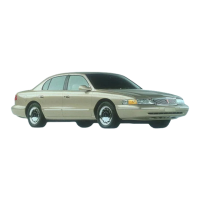
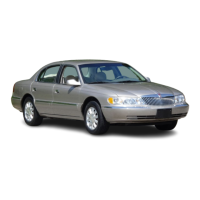

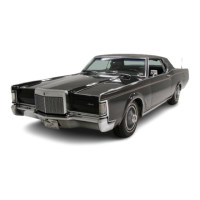
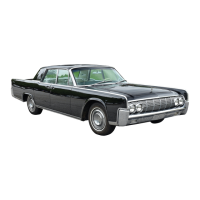
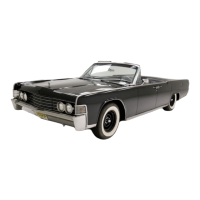
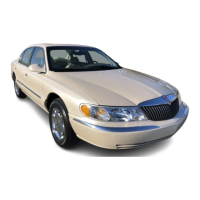
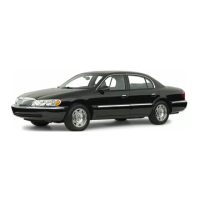
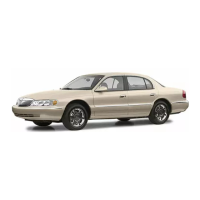

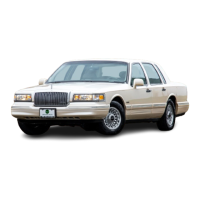
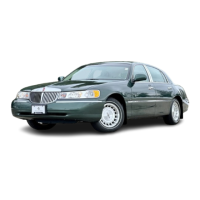
